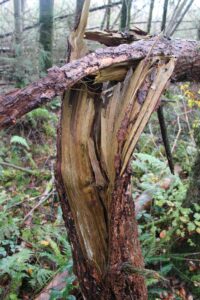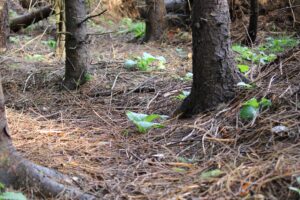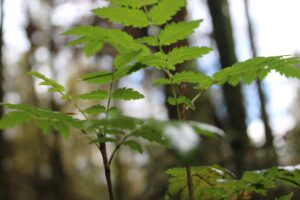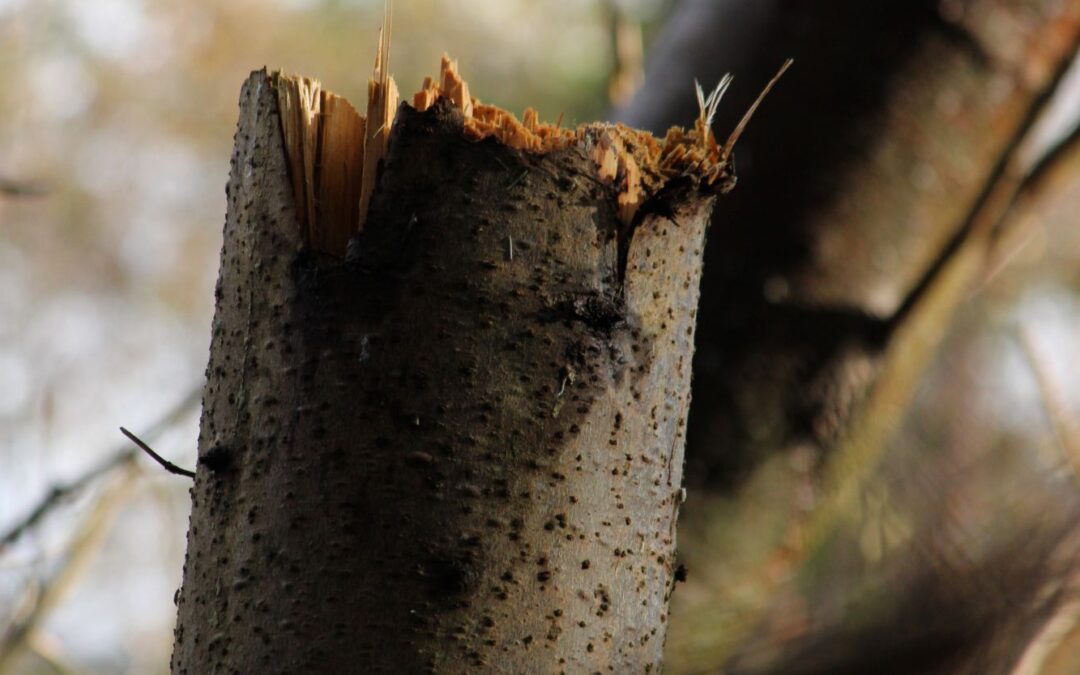After the Storm: How Longwood Is Thriving Beneath a Broken Canopy
When Storm Darragh swept through west Wales in December 2024, Longwood near Lampeter was one of the forests hardest hit. Winds exceeding 90 mph snapped trunks and scattered branches across moss-covered paths. At first glance, it looked like devastation — trails blocked, trees toppled, and the canopy torn apart.
Yet as the months passed, the process of Longwood forest regeneration after Storm Darragh became evident. Beneath the chaos, the woodland was quietly renewing itself.

When the Canopy Breaks, the Light Returns
For decades, Longwood’s upper slopes were dominated by non-native plantation trees — fast-growing conifers and other species that lacked the deep roots and flexibility of the surrounding native woodland. When Storm Darragh hit, it was these trees that bore the brunt of the wind. Whole stands went down like dominos, their shallow roots no match for the saturated soil and driving gusts.
In their place, light returned. For the first time in years, sunlight reached the forest floor, streaming through the gaps left by the fallen plantation canopy. Areas that had been dark and still were suddenly alive with movement and colour.
By spring 2025, seedlings of rowan, holly, and oak were pushing up through the leaf litter. Brambles, wood sorrel, and foxgloves spread into the open glades, drawing pollinators and small birds. The storm had, unintentionally, created space for native species to reclaim the ground.
Ecologists call this process gap regeneration — a natural reset that restores diversity and resilience. What looked like destruction was, in truth, the start of renewal.

The Hidden Gifts of Fallen Wood
The storm also left behind tons of fallen wood — trunks, branches, and uprooted stumps. As this wood decomposes, it releases carbon, nitrogen, and other nutrients, enriching the soil for new seedlings. Fungi flourish on decaying logs, beetles inhabit crevices, and mosses reclaim bark surfaces.
The fallen non-native trees also provide natural nursery beds for native species. Over time, these logs support further Longwood forest regeneration after Storm Darragh, creating microhabitats for amphibians, insects, and small mammals while fostering new tree growth.

Renewal in Motion
Today, Longwood feels lighter, more open, and more alive. Sunlight filters through gaps in the canopy, the sweet scent of decaying wood fills the air, and young rowan, holly, and oak seedlings reach skyward.
Storm Darragh may have torn Longwood’s canopy apart, but it also reawakened the forest’s natural rhythms. Out of loss came renewal; out of darkness, light. The storm’s chaos has become the seedbed for Longwood’s future.
Come and explore Longwood’s rejuvenated paths and see the forest’s new growth for yourselves. Check out our trails pages to find out where your next Longwood adventure will be.

